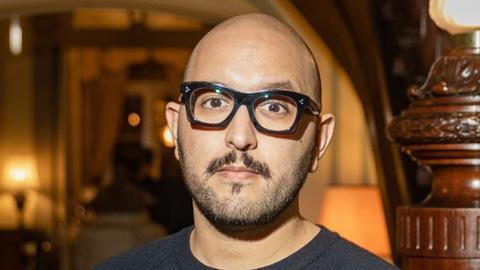Max Sebti, founder and CEO of Score, on why he believes AI is set to be open source across editing, reformatting, scene detection and more

AI is moving into editing, reformatting and scene detection. The big decision is not whether to use it, but whether to rely on closed, black-box tools or to build on open foundations you can see and shape.
Audiences keep moving further online. For broadcast and production companies, that means more platforms and more formats to juggle, while also meeting faster turnaround times. Broadcasters will only win by being quick on their feet at the same time as retaining trust, and by avoiding tools that slow them down or create new hurdles. Open source and open platforms aren’t a philosophical position here; it’s the practical way to keep up as the market changes.
Trust comes first. A closed AI system can look impressive in a demo, but if you can’t see how it works, you can’t properly judge its risks. When a tool becomes subject to regulation and compliance checks, as they are already beginning to, that opacity becomes a liability. Open approaches let you look under the bonnet: you can review what the model does well, where it struggles and how it was evaluated before its output ever reaches viewers’ screens. That visibility will be essential as new AI rules roll out very soon and organisations need to show how decisions were made.
Speed of development is the next big advantage. A standout benefit of open ecosystems is how quickly they improve. When thousands of developers share fixes and ideas in public forums, useful features and improvements arrive faster — quicker processing, smarter scene detection, more accurate labelling. Instead of waiting for a product release schedule, you benefit from constant, incremental, community driven progress.
A steady flow across jobs and departments matters just as much as the speed of its individual parts. Most organisations in our space already juggle a lengthy chain of automated and semi-automated systems: for editing, media asset management, subtitling, and rights, for example. Drop a proprietary AI service into that mix and you can end up with data stuck in a format only one supplier supports, or extra, intermediary tools entering the mix. Open standards and open interfaces cut that friction. You keep your media and metadata portable, your pipelines flexible and your choices open. The industry has already seen this logic succeed in delivery packaging.
Extending these arguments reveals additional reasons to seek open platforms and tools. Safety is easier when systems can be inspected. News and factual teams, in particular, need to trace how any output was produced and challenge it when necessary. With open tools you can run independent checks and test for bias. That reduces surprises, and reputational risk, before anything reaches air.
There’s also a simple economic argument. Why should every broadcaster rebuild the same speech to text, labelling or moderation tools from scratch? Why not lower costs through shared infrastructure and community R&D? Open components let teams reuse what already works and spend their money where it can create new value. Reuse isn’t just cheaper; it’s faster, and it aligns with the broader economic gains forecast for generative AI.
Governance is clearer in the open. The industry is converging on sensible norms for disclosure when synthetic content is used. Open tooling makes these policies practical: easier to audit, easier to document, and simpler to apply consistently across different suppliers. That consistency builds confidence inside the organisation and with viewers.
Culture counts, too. The strongest engineers and creative technologists want their work to be visible and meaningful. Open projects reward contribution and reputation, which helps you attract and keep the people who will push your AI initiatives forward—and share what they learn with colleagues.
So what does “open first” look like in practice? Start with the workloads that touch most of your day to day activities: maybe captioning, translation, content checks or metadata. Choose tools you can inspect, that have clear APIs and export options, so there are no loose links in the chain. Then design your workflows so you can swap out components effortlessly without disrupting everything around them.
The payoff is clear. You move faster because you’re building on shared progress, not reinventing it. You reduce risk because you can explain and reproduce what the system did. You stay flexible as platforms, formats and rules evolve. Most of all, open technologies match the broadcast DNA: shared standards and interoperable workflows have always raised quality and lowered friction. In the AI era, choosing open tools is simply the modern way to maintain and elevate standards.









No comments yet